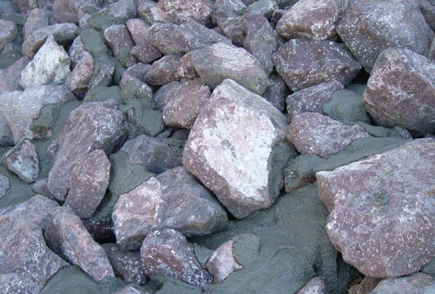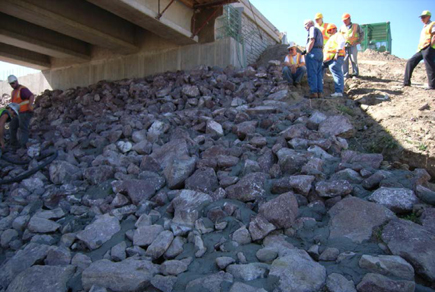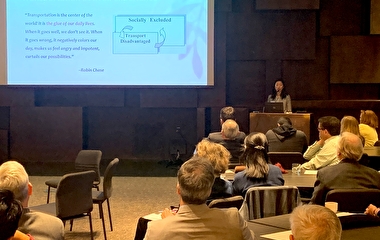Research at the University of Minnesota’s Saint Anthony Falls Laboratory (SAFL) has revealed a promising way to protect spill-through bridge abutments while reducing project costs.
Spill-through abutments are used frequently in Minnesota’s waterway bridges, says Jeff Marr, principal investigator and associate director of engineering and facilities at SAFL. Abutments are the vertical substructures at bridge ends; spill-through (open) abutments, which only partially retain the embankment soil, need protection from river erosion and scour.
Riprap cover—rock or other material—is often used to protect the side slopes of spill-through abutments. Obtaining large enough stone, however, can dramatically increase project construction costs in some regions of the state. “The results of our study show that using smaller stones and applying the techniques associated with partially grouted riprap allows protection of the abutments from river scour and can likely reduce the costs associated with bringing in large pieces of riprap,” Marr says.
from scour. Photo: SAFL
In addition, he says, this method of riprap installation may provide greater protection for bridge abutments: laboratory testing showed that, for the same size stone, the strength of partially grouted riprap was more than three times greater than conventional riprap.
Partially grouted riprap, or matrix riprap, is installed by placing conventional riprap material and then “welding” contact points with a specialized grout mixture. The grout covers and penetrates the riprap and bonds neighboring stones together, forming a “matrix” armor layer that serves to protect the structure.
The MnDOT-sponsored study was conducted in several phases, including site visits and observation of matrix riprap installation, laboratory experiments to evaluate matrix riprap application and installation, experiments to test matrix riprap on a prototype abutment, and hydraulic experiments focused on measuring matrix riprap strength.
“The results of our study can be used to support the use of matrix riprap in place of larger stone on bridge abutments, providing valuable savings for transportation organizations while delivering results that are as good as, or better than, other abutment-protection measures,” Marr says.




